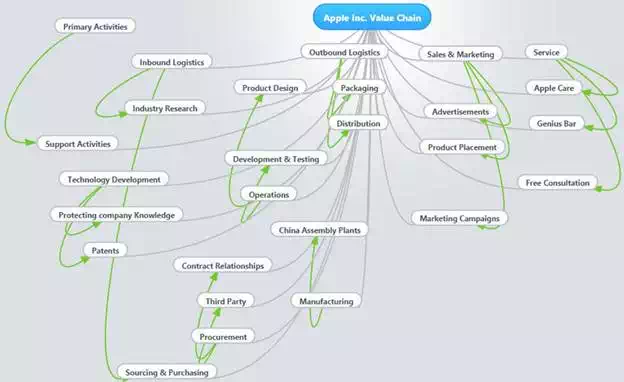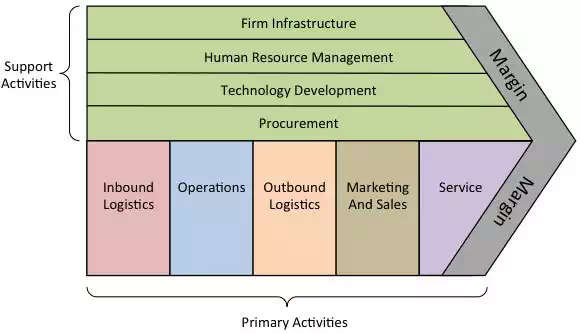Components & Role of MIS (Management Information System)
Facebook is one of the most profitable businesses in the world, and its entire existence depends on the use of information technology and information systems.
Other successful companies such as Google, Amazon, eBay, and Financial Institutions- most of their success is due to technology.
This tutorial will look at the roles of MIS in the organization and how an organization can take advantage of MIS to gain competitive advantage.
Definition of data and information and characteristics of good information
Data refers to raw basic facts i.e. price of a product, the number of products purchased, etc. that haven't yet been processed.
For example, a price of $6 and a quantity of 10 do not convey any meaning to a customer at a point of sale till. Information should be processed data that conveys meaning to the recipient.
For example, multiplying $6 by 10 gives us $60, which is the total bill that the customer should pay.
Good information should be timely and available when it is needed.
The following are the characteristics of good information.
- Accurate – information must be free from errors and mistakes. This is achieved by following strict set standards for processing data into information. For example, adding $6 + 10 would give us inaccurate information. Accurate information for our example is multiplying $6 by 10.
- Complete – all the information needed to make a good decision must be available. Nothing should be missing. If TAX is an application to the computation of the total amount that the customer should pay then, it should be included as well. Leaving it out can mislead the customer to think they should pay $60 only when in actual fact, they must pay tax as well.
- Cost Effective – the cost of obtaining information must not exceed the benefit of the information in monetary terms.
- User-focused – the information must be presented in such a way that it should address the information requirements of the target user. For example, operational managers required very detailed information, and this should be considered when presenting information to operational managers. The same information would not be appropriate for senior managers because they would have to process it again. To them, it would be data and not information.
- Relevant – the information must be relevant to the recipient. The information must be directly related to the problem that the intended recipient is facing. If the ICT department wants to buy a new server, information that talks about a 35% discount on laptops would not be relevant in such a scenario.
- Authoritative – the information must come from a reliable source. Let's say you have a bank account and you would like to transfer money to another bank account that uses a different currency from yours. Using the exchange rate from a bureau de change would not be considered authoritative compared to getting the exchange rate directly from your bank.
- Timely – information should be available when it is needed. Let's say your company wants to merge with another company. Information that evaluates the other company that you want to merge with must be provided before the merger, and you must have sufficient time to verify the information.
Competitive advantage of information and MIS
Competitive advantage is a position that makes a business more profitable than its competitors. For example, producing products at a lower cost than your competitors makes you more profitable.
Information systems have the capacity to help an organization into such a position. They do so in the following ways
Operational excellence – operational excellence seeks to improve the operations of the business. Let's take an example of a retail store. A retail store can use information systems to automatically place an order with a supplier once the inventory level reaches the re-order limit. This ensures that the retail store never runs out of inventory and customers can always count on it to find what they need.
New business models, products, and services – let's continue with the example of a retail store. The retail store can develop a web based order system or smartphone application that clients can use to buy items from the comfort of their homes or wherever they are. The order system can be linked to a delivery business and have support for online payments. This is a new business model compared to customers walking in to make purchases vs doing it from web based or smartphone apps.
Improved supplier and customer relations – historical data is used to understand the needs of the customers and suppliers. This data is then used to create services and products that address the needs. This leads to long-term relationships with customers and business which puts an organization in a more profitable position.
Improved decision making – information is critical when making decisions. Information systems if designed and operated efficiently, output information that has all the characteristic of good information described in the above section. This enables an organization to make decisions that will profit the organizations.
Components of MIS and their relationship
A management information system is made up of five major components namely people, business processes, data, hardware, and software. All of these components must work together to achieve business objects.
People – these are the users who use the information system to record the day to day business transactions. The users are usually qualified professionals such as accountants, human resource managers, etc. The ICT department usually has the support staff who ensure that the system is running properly.
Business Procedures – these are agreed upon best practices that guide the users and all other components on how to work efficiently. Business procedures are developed by the people i.e. users, consultants, etc.
Data – the recorded day to day business transactions. For a bank, data is collected from activities such as deposits, withdrawals, etc.
Hardware – hardware is made up of the computers, printers, networking devices, etc. The hardware provides the computing power for processing data. It also provides networking and printing capabilities. The hardware speeds up the processing of data into information.
Software – these are programs that run on the hardware. The software is broken down into two major categories namely system software and applications software. System software refers to the operating system i.e. Windows, Mac OS, and Ubuntu, etc. Applications software refers to specialized software for accomplishing business tasks such as a Payroll program, banking system, point of sale system, etc.
Porter's Value chain
Think of a company such as Apple Inc. Why are they successful? Why do customers love and buy the iPhone? It is because the iPhone adds value to their lives. This is why Apple Inc. is a successful business. Value chain refers to activities that a company performs to create value for its customers.
The concept of a value chain was developed by Michael Porter. Porter's value chain has two activities namely;
- Primary activities – these are activities that are related to the creating products/services, marketing and sales, and support. Primary activities consist of inbound logistics, operations, outbound logistics, marketing and sales, and service.
- Support activities – these are activities that support the primary activities. Support activities consist of procurement (purchasing), human resource management, technological development and infrastructure.
The following diagram depicts the value chain
Th e following illustration shows the value chain for Apple Inc.

The overall goal of the value chain is to help a business gain competitive advantage. Competitive advantage is a business's position in a market that makes it to be more profitable than its direct competitors.
Influence of IT on organizational goals
Organizational goals refer to objectives and the mission of the organization, especially in the long term. Regardless of the type of business that an organization engages in, the overall goal is to create value for the customers or clients as stated in the above section.
Business Information Technology alignment is concerned with using information technology to effectively achieve business goals.
Two of the most common ways that an organization can provide value is by offering a quality product at a lower price than the competitor or at a high price but with more features that add value to the customers.
Information technology enables businesses to process and analyze large amounts of data at a cheaper cost and within the shortest possible time. This enables organizations to provide quality products at a cheaper price.
Let's take a bank example. A bank can use ATM to allow the clients to withdraw money and other automated means to deposit money. Customers with queries can be directed to a website that has frequently asked questions. Both individuals and businesses can view the statements online if they subscribe to internet banking.
The above IT business practices lead to reduced costs of doing business and creating new products and services. Reduced cost of doing business enables a bank to reduce the bank charges, therefore, offering a quality product or service at a cheaper rate.
Summary:
Business entities exist to make profits. Not for profit organizations exist to deliver quality services or products cost effectively.
Regardless of the type of organization, MIS has a major role to play in achieving the objectives.
MIS enables organizations to make sound decisions by providing decision makers with information.
